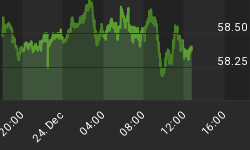Gold and Silver ended the week on a very strong note, and the questions on many investors and traders minds include, of course, how much farther has this bull market run got to go, and could we see further acceleration from here?
If we stand back and look around at what is happening in commodities markets generally, it should be abundantly clear that what we are seeing is a global flight into hard assets, a flight that will obviously be exacerbated by a plunging dollar. The implications of this are that, despite their current overbought status, the rate of increase in prices of many commodities will continue to accelerate, near-term correction or not, and when you stop to think that gold is the king of commodities and in times of extreme uncertainty and especially in conditions of hyperinflation is the most attractive stuff on earth, you quickly realize that the upside potential for gold is enormous.

Many citizens of the United States see their country as the center of the universe, which is understandable as it is continental in size and has a massively powerful military and - until now - has possessed the "de facto" world currency. However this view can create a dangerous myopia, particularly for U.S. investors who tend not to invest outside their own country. The United States has exploited the advantage and leverage potential resulting from possession of the world currency to the absolute limit, and created debts and obligations that are of truly astronomic proportions and are physically impossible to correct. The inevitable consequence of all this is that the dollar is now buckling and is set to plumb much lower levels, which will pose a grave risk for the world financial system.

An immediate and obvious corollary of a dollar collapse is that the commodities bull market will continue - and will accelerate. A learned associate wrote to me with the "revelation" that gold's rise could accelerate and it could even reach its 1979 high in the $840 area. $840?! - this is nothing considering what's bearing down on us, especially if you factor in all the inflation since 1979. While there are striking parallels between the late 1970's and what is going on now, the analogy should not be pushed too far - because the situation we are now in is far worse, and could easily result in gold racing quickly towards $2000 - $3000, and if what is written about the silver supply situation is even half true, it will go to the moon.
Many United States investors need to wake up fast and start "thinking outside the box" if they are to preserve their capital. Here is a fact of life - if your assets are denominated in US dollars and the dollar falls in value on world markets by say 50% over the next year or two, as is possible, you will have lost half your capital. It may not seem like it at first as you go about your local shopping, but just watch the inflation that comes down the pipe and you'll discover the new reality soon enough. Better still, try going on a foreign holiday and see how far you get.
So what's a poor US investor to do? The solution is actually simple and involves two key planks. The first thing you have to do is get your money out of US denominated assets, and the second thing is to invest in hard assets - Base Metals, Precious Metals, Oil and Commodities generally, via stocks or other instruments that are not priced in US dollars. In other words, put your money into hard assets priced in more resilient currencies.
Another key point is that the Precious Metals market especially appears to be moving up through the gears, and shifting from a trading market, with rallies followed by substantial reactions, to a situation where it will be rising steeply, and more or less continuously for a significant period. Therefore, investors should increasingly desist from trading this market and instead buy and hold.
On www.clivemaund.com we specialize in picking Precious Metals stocks that are set to outperform on the US markets themselves, of course, but also cover a large number of stocks that are priced in other currencies, especially in Australian and Canadian dollars. Many stocks have already risen substantially, and we have recently been rotating out of some of them and into those that just starting to take off, thus increasing leverage.
















